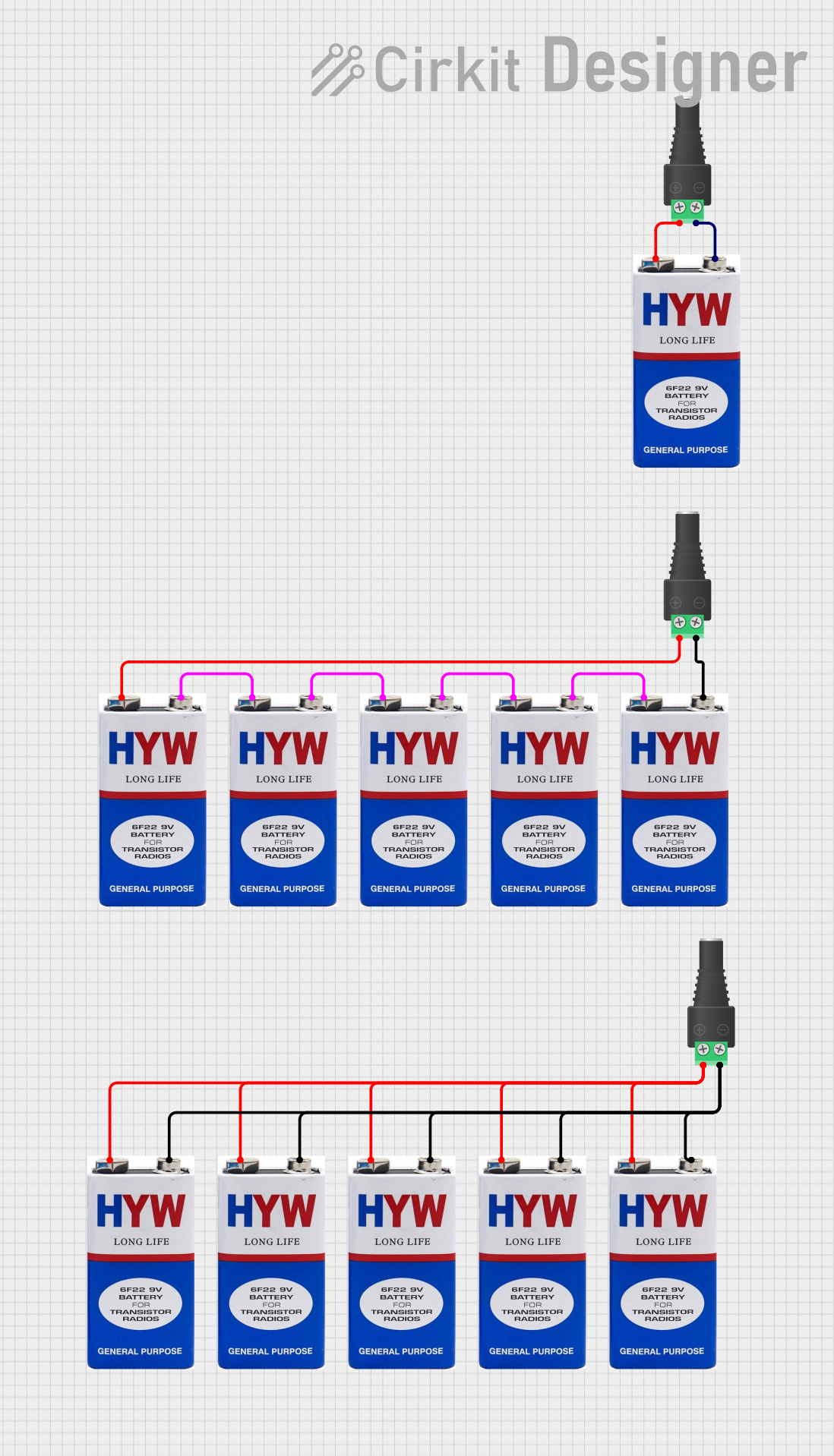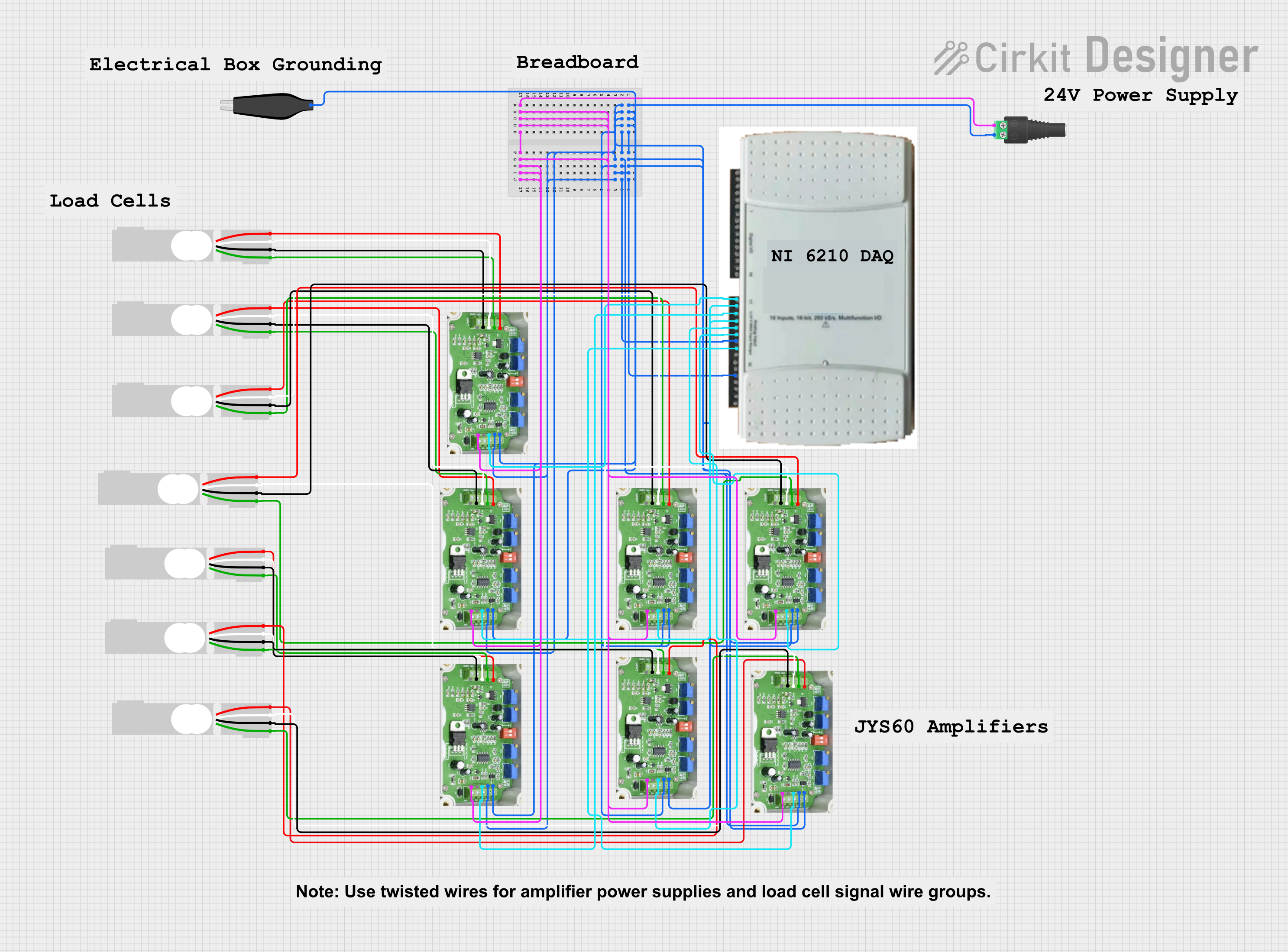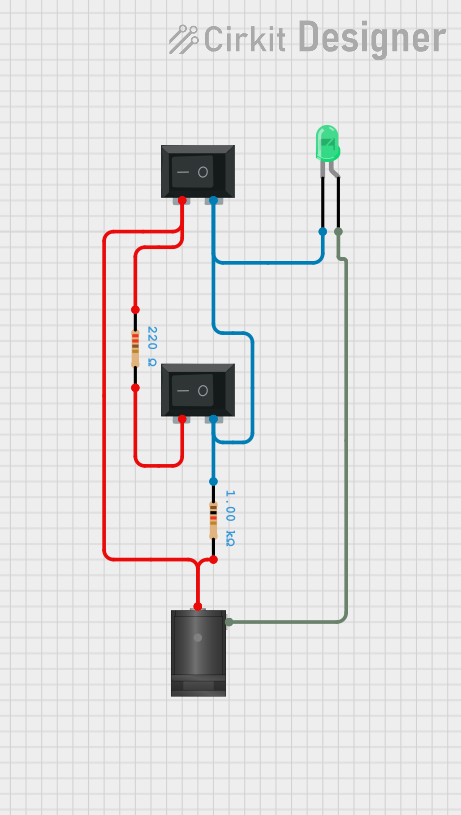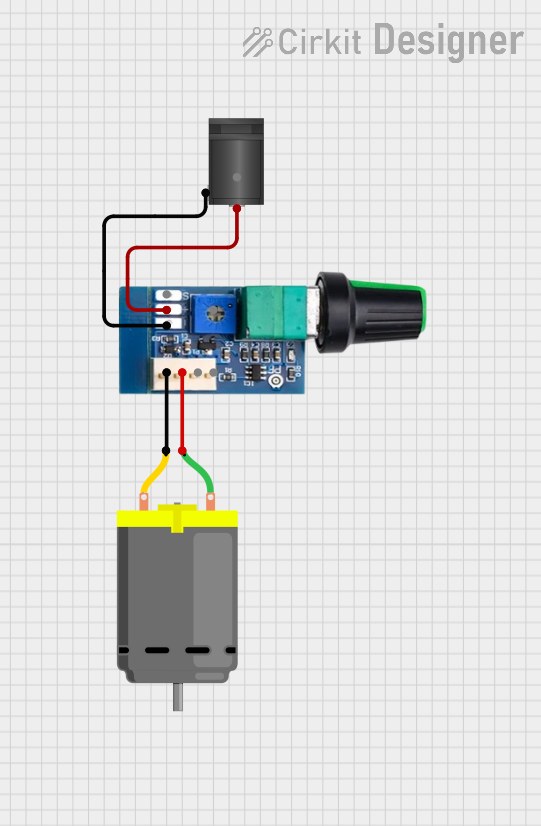
How to Use dc barrel jack 5.5x2.1mm male: Examples, Pinouts, and Specs

 Design with dc barrel jack 5.5x2.1mm male in Cirkit Designer
Design with dc barrel jack 5.5x2.1mm male in Cirkit DesignerIntroduction
The DC barrel jack (5.5x2.1mm male) is a widely used electrical connector designed for supplying power to electronic devices. It features a cylindrical shape with a 5.5mm outer diameter and a 2.1mm inner diameter, making it compatible with a variety of power adapters. This connector is commonly found in consumer electronics, DIY projects, and prototyping applications due to its ease of use and standardization.
Explore Projects Built with dc barrel jack 5.5x2.1mm male

 Open Project in Cirkit Designer
Open Project in Cirkit Designer
 Open Project in Cirkit Designer
Open Project in Cirkit Designer
 Open Project in Cirkit Designer
Open Project in Cirkit Designer
 Open Project in Cirkit Designer
Open Project in Cirkit DesignerExplore Projects Built with dc barrel jack 5.5x2.1mm male

 Open Project in Cirkit Designer
Open Project in Cirkit Designer
 Open Project in Cirkit Designer
Open Project in Cirkit Designer
 Open Project in Cirkit Designer
Open Project in Cirkit Designer
 Open Project in Cirkit Designer
Open Project in Cirkit DesignerCommon Applications and Use Cases
- Powering Arduino boards, Raspberry Pi, and other microcontrollers
- Supplying power to LED strips, small appliances, and portable devices
- DIY electronics projects and prototyping
- Replacing or repairing power connectors in consumer electronics
Technical Specifications
The following table outlines the key technical details of the DC barrel jack (5.5x2.1mm male):
| Parameter | Specification |
|---|---|
| Outer Diameter | 5.5mm |
| Inner Diameter | 2.1mm |
| Voltage Rating | Typically up to 24V DC |
| Current Rating | Typically up to 5A |
| Connector Type | Male (plug) |
| Polarity | Center pin positive (common standard) |
| Material | Metal (conductive parts) and plastic (insulation) |
Pin Configuration and Descriptions
The DC barrel jack (male) has two main connection points:
| Pin | Description |
|---|---|
| Center Pin | Positive terminal (commonly +V) |
| Outer Sleeve | Negative terminal (commonly ground or -V) |
Usage Instructions
How to Use the Component in a Circuit
- Identify Polarity: Ensure that the power adapter or source matches the polarity of the device. Most DC barrel jacks use a center-positive configuration, where the center pin is positive (+) and the outer sleeve is negative (-).
- Soldering: If you are attaching the barrel jack to wires or a PCB:
- Solder the positive wire to the center pin connection.
- Solder the negative wire to the outer sleeve connection.
- Connect to Device: Insert the male barrel jack into the corresponding female socket on the device. Ensure a snug fit for reliable power delivery.
- Verify Voltage and Current: Confirm that the power source provides the correct voltage and current for the connected device to avoid damage.
Important Considerations and Best Practices
- Voltage Compatibility: Always check the voltage rating of the device and ensure the power source matches it.
- Current Handling: Ensure the current drawn by the device does not exceed the barrel jack's current rating (typically 5A).
- Polarity Check: Double-check the polarity of the power source and device to prevent reverse polarity damage.
- Secure Connections: Use heat shrink tubing or electrical tape to insulate soldered connections and prevent short circuits.
Example: Connecting to an Arduino UNO
The DC barrel jack (5.5x2.1mm male) is commonly used to power an Arduino UNO. Below is an example of how to connect it:
- Use a 9V or 12V DC power adapter with a 5.5x2.1mm female connector.
- Plug the male barrel jack into the Arduino UNO's power input socket.
- Ensure the adapter provides the correct voltage and current (recommended: 7-12V, 1A).
Arduino Code Example
If you are powering an Arduino UNO and running a simple LED blink program, here is the code:
// This example code blinks an LED connected to pin 13 on the Arduino UNO.
// Ensure the Arduino is powered via the DC barrel jack (5.5x2.1mm male).
void setup() {
pinMode(13, OUTPUT); // Set pin 13 as an output pin
}
void loop() {
digitalWrite(13, HIGH); // Turn the LED on
delay(1000); // Wait for 1 second
digitalWrite(13, LOW); // Turn the LED off
delay(1000); // Wait for 1 second
}
Troubleshooting and FAQs
Common Issues Users Might Face
- Loose Connection: The barrel jack may not fit snugly into the female socket.
- Solution: Ensure the connector dimensions (5.5x2.1mm) match the socket. Replace worn-out connectors if necessary.
- Device Not Powering On: The device does not receive power when the barrel jack is connected.
- Solution: Check the power source for correct voltage and polarity. Verify that the soldered connections are secure.
- Overheating: The barrel jack becomes hot during operation.
- Solution: Ensure the current drawn by the device does not exceed the jack's rating (typically 5A). Use a power source with sufficient capacity.
- Short Circuit: Sparks or damage occur when connecting the barrel jack.
- Solution: Verify that the positive and negative terminals are not shorted. Insulate all connections properly.
FAQs
Q: Can I use this barrel jack for AC power?
A: No, the DC barrel jack is designed specifically for DC power. Using it with AC power can damage the device and pose safety risks.
Q: What happens if I reverse the polarity?
A: Reversing the polarity can damage the connected device. Always verify the polarity of the power source and device before connecting.
Q: Is this barrel jack waterproof?
A: No, the standard 5.5x2.1mm male barrel jack is not waterproof. Use additional enclosures or waterproof connectors for outdoor applications.
Q: Can I use this jack for high-power applications?
A: The barrel jack is typically rated for up to 5A. For higher power applications, consider using connectors with higher current ratings.